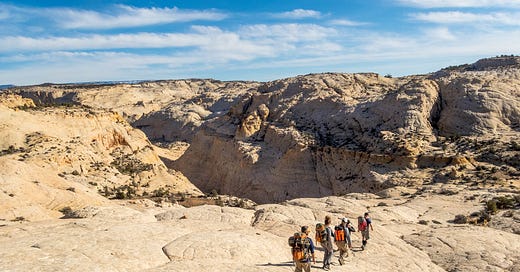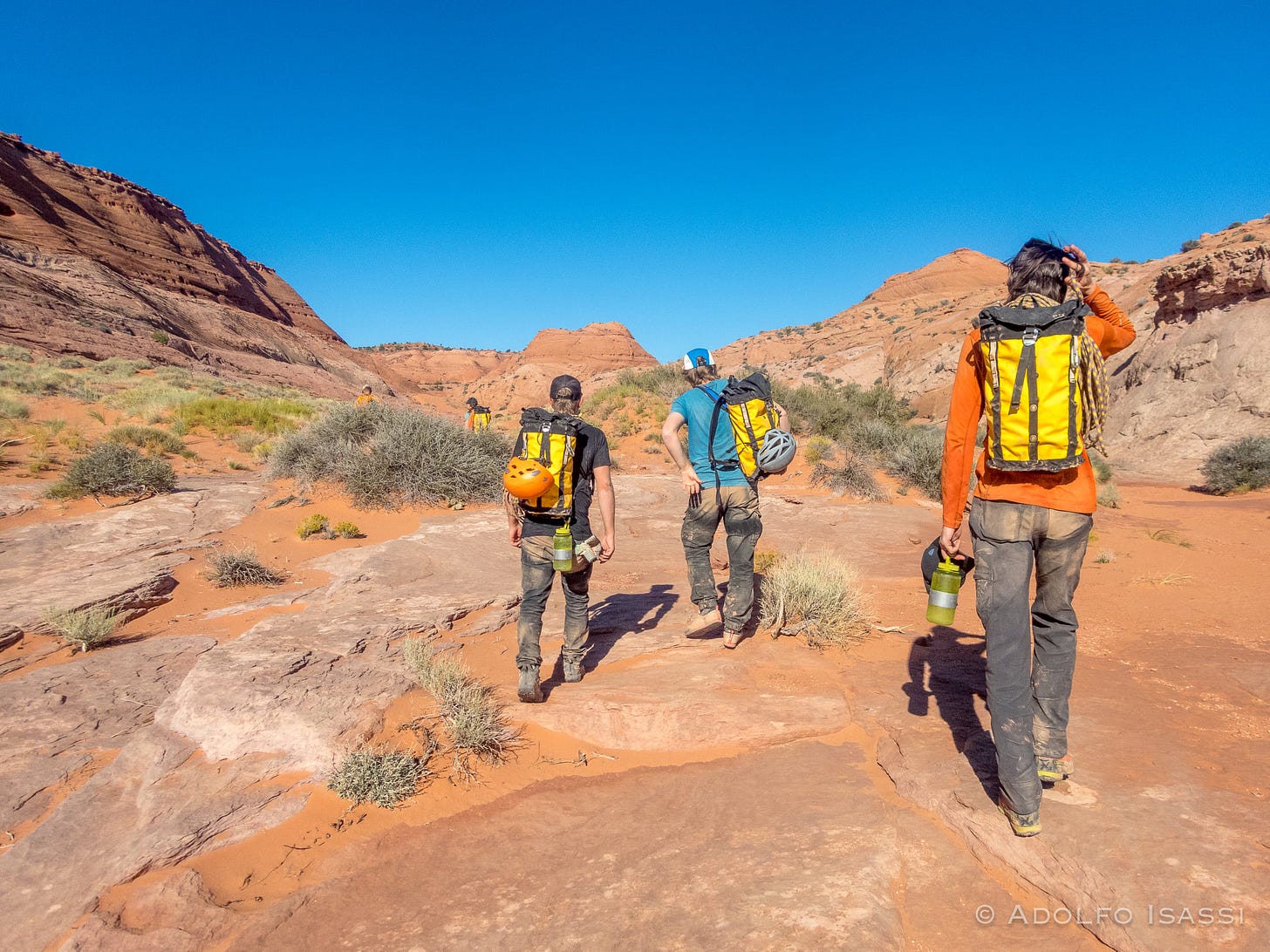A&E Damage
Every canyoning route has 3 sections: Approach, Technical, Exit
As canyoneers, we tend to look at the approach and exit of canyons, as the price of admission to enter the technical section of the route. Sometimes we pay at the entrance, sometimes at the exit, and sometimes at both.
Because our focus is on the technical section, we frequently overlook not only the risks on the approach and exit (A&E) , but also the damage we cause while traveling these two sections.
Good habits while hiking on the A&E sections:
Walk on creek beds, washes, water runoff paths as much as possible.
Walk on ridges when washes get wet, steep or choked with vegetation.
Transition from washes to ridges by finding the wash or stream shoulders.
Plan your routes by linking washes and ridges to gain the head of the canyon during the approach.
Hike in a single file to minimize damage
Avoid stepping on biocrust soil.
Avoid traversing steep dirt slopes, scree slopes or rocky slopes.
When possible, walk on water ways. Washes, creeks, runoff streams.
Plan your approach by linking washes, shoulders and ridges.
There are some bad habits that will exacerbate the damage on the A&E sections:
Travel on straight lines towards the canyon , trampling soil and vegetation
Creating shortcuts and sneak-routes to gain early entrances or exits.
Hiking shoulder to shoulder in a wide line widening the damage.
Traversing steep dirt or scree slopes causing unnecessary erosion and/or rock falls.
Locate the water ways, even when they are dry and use them as your corridors through the desert
Bad online habits
Do not share GPS tracks, instead share GPS waypoints.
If you decide to venture into writing actual beta, make sure to pay the due attention to the directions to navigate the A&E responsibly.
Traffic, It’s the high traffic.
With a set of tracks over bio-crust, a bush-whack-thru once a year, the land has a chance to recover. But with the same traffic every day, every week, the land will not recover, unless closed to traffic. This is why you see the 'brown wands' reading 'area closed for restoration'.
Who cares?
The damage that us canyoneers create in the technical sections of canyons, damage like rope grooves, hardware scratches on dow-climbs, anchor-trash like webbing, are only visible to us. But the damage that we cause in the A&E sections, are visible to everybody, including land managers that are in charge of preserving the area. The damage that we cause in the A&E sections have more potential to trigger closures and give the sport or community a bad reputation.
Biocrust soil: Biological soil crusts, often abbreviated as biocrusts, are communities of living organisms inhabiting the surface of soils in arid and semi-arid ecosystems, which form stable aggregates of soil particles in a thin layer millimeters to centimeters thick.








